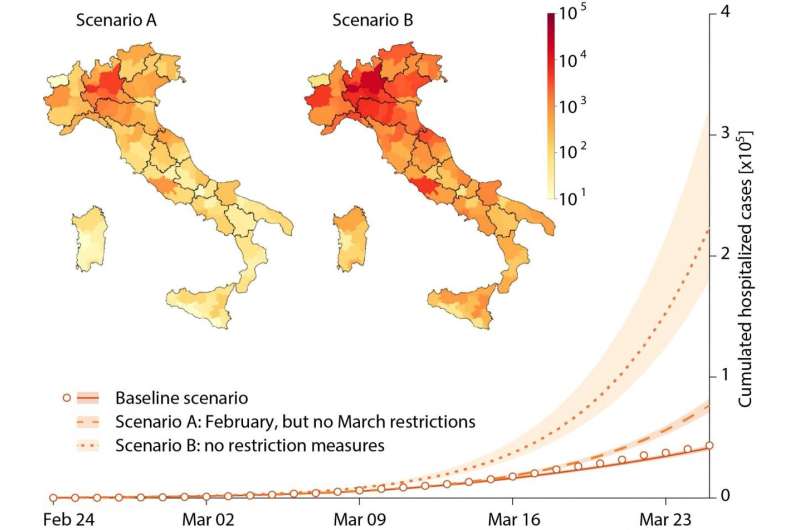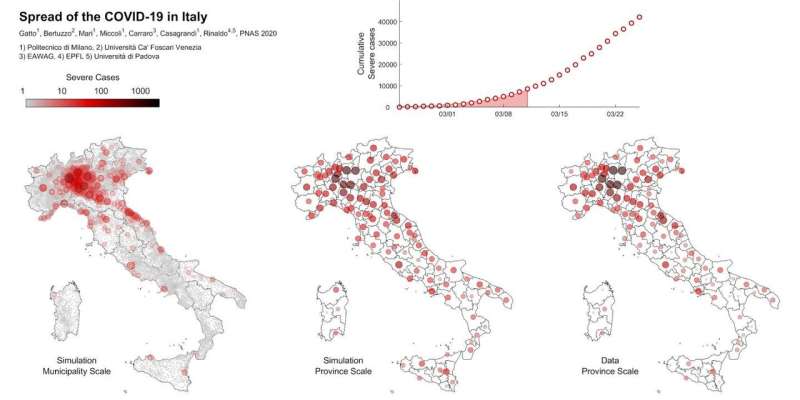COVID-19: Impact of containment measures in Italy: 200,000 hospitalizations avoided in March

Since the beginning of the epidemic until March 25, the mobility restrictions implemented by the Italian government have avoided at least 200,000 hospitalizations and reduced the contagion transmission by 45% according to a study accepted for publication in the renowned journal PNAS, coauthored by a group of Italian scientists belonging to Politecnico di Milano, Università Ca' Foscari Venezia, University of Zurich, EPFL Lausanne, and Università di Padova.
Researchers have constructed the first spatial model of COVID-19 spread in Italy accounting for both the time evolution of the infection in local communities and their geographical distribution and including the individuals' mobility to and from work and study-places. The spatial resolution is at the level of provinces. The Istat census has been used to estimate pre-epidemic mobility, while the reduction of mobility due to restrictions has been estimated from an independent study based on mobile phones geolocalization.
The map of infections has been contrasted with data and the model turns out to be quite accurate. Therefore, it can be used to provide scenarios regarding future governmental measures
By analyzing the contagion map, scientists have found that the epidemic has initially spread quite rapidly along the main transportation infrastructures of their country.
"If the restrictions had not been implemented, the hospitalizations would have been about 200,000 thus exceeding our hospitals' capacity—says Marino Gatto, Professor of Ecology at Politecnico di Milano and leading author of the article—We can conclude that the quite restrictive measures enforced since March 10, whose effect is only partially accounted for in the study (concluded on March 25), are responsible for the continuous decrease of the infections that we are observing right now."

"We have updated the model using the most recent data. Our projections confirm a further decrease of new infections in the next weeks if the current containment measures are maintained—adds Enrico Bertuzzo, professor of hydrology at Università Ca' Foscari Venezia and coauthor of the study—However, uncertainty is quite large and any new available data is important to understand the epidemic dynamics and its likely future evolution."
The authors of the study are experienced scientists, who have a long-term history of collaboration in the analysis of epidemic diffusion, in particular cholera and water-related diseases. Their previous research results have been provided to the World Health Organizations and Médecins Sans Frontières to develop intervention strategies aimed at limiting the spread of these diseases.



















